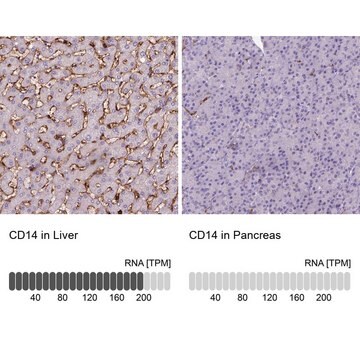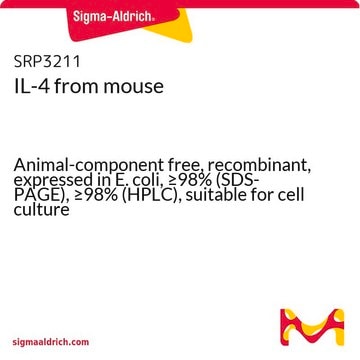C7673
Monoclonal Anti-CD14 antibody produced in mouse
clone UCHM-1, purified immunoglobulin, buffered aqueous solution
Sinónimos:
Monoclonal Anti-CD14
About This Item
Productos recomendados
biological source
mouse
conjugate
unconjugated
antibody form
purified immunoglobulin
antibody product type
primary antibodies
clone
UCHM-1, monoclonal
form
buffered aqueous solution
mol wt
antigen 55 kDa
species reactivity
human
technique(s)
flow cytometry: 5 μL using 1 × 106 cells
isotype
IgG2a
UniProt accession no.
shipped in
wet ice
storage temp.
2-8°C
target post-translational modification
unmodified
Gene Information
human ... CD14(929)
¿Está buscando productos similares? Visita Guía de comparación de productos
Specificity
3rd Workshop: code no. 203
4th Workshop: code no. M24
Immunogen
Application
- Flow cytometry at a dilution of 5μL using 1 × 106 cells
- Immunofluorescence.
- Immunoblotting.
Biochem/physiol Actions
Target description
Physical form
Disclaimer
Not finding the right product?
Try our Herramienta de selección de productos.
Storage Class
10 - Combustible liquids
wgk_germany
nwg
flash_point_f
Not applicable
flash_point_c
Not applicable
Certificados de análisis (COA)
Busque Certificados de análisis (COA) introduciendo el número de lote del producto. Los números de lote se encuentran en la etiqueta del producto después de las palabras «Lot» o «Batch»
¿Ya tiene este producto?
Encuentre la documentación para los productos que ha comprado recientemente en la Biblioteca de documentos.
Nuestro equipo de científicos tiene experiencia en todas las áreas de investigación: Ciencias de la vida, Ciencia de los materiales, Síntesis química, Cromatografía, Analítica y muchas otras.
Póngase en contacto con el Servicio técnico






